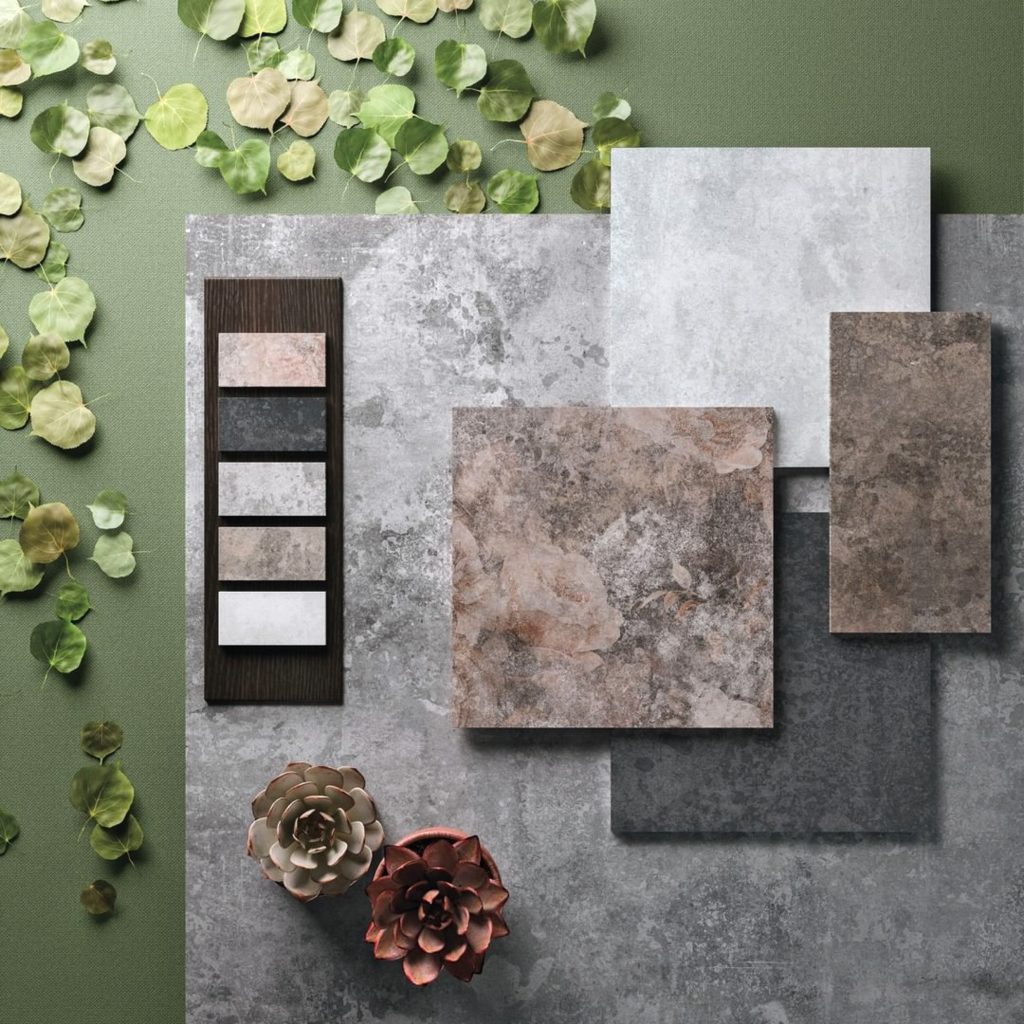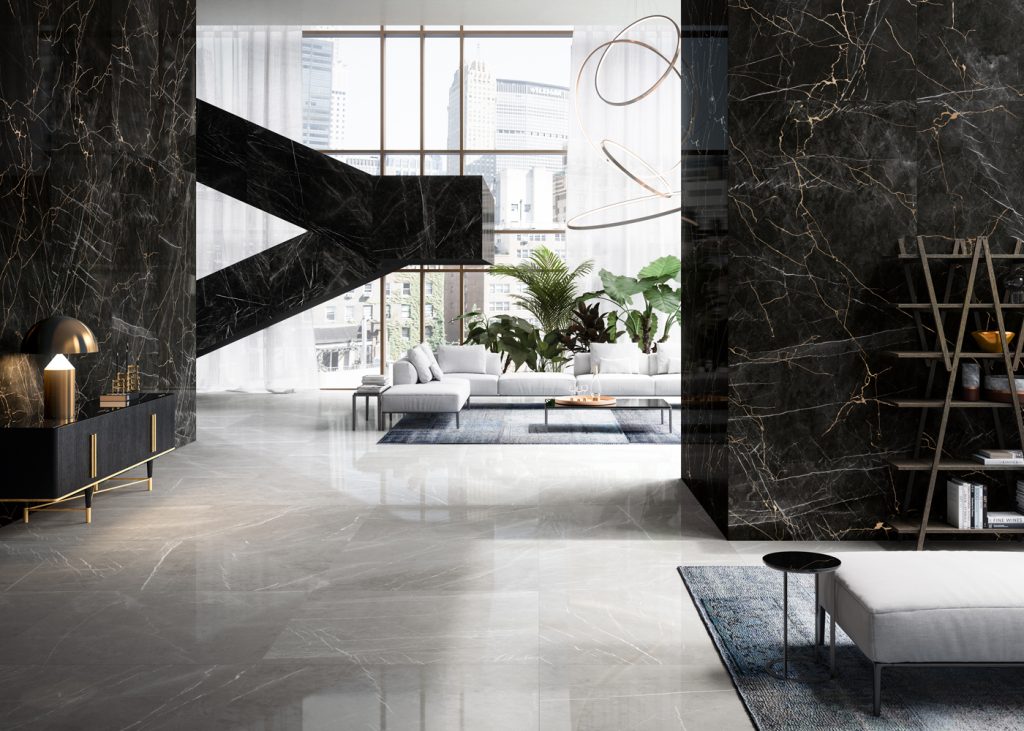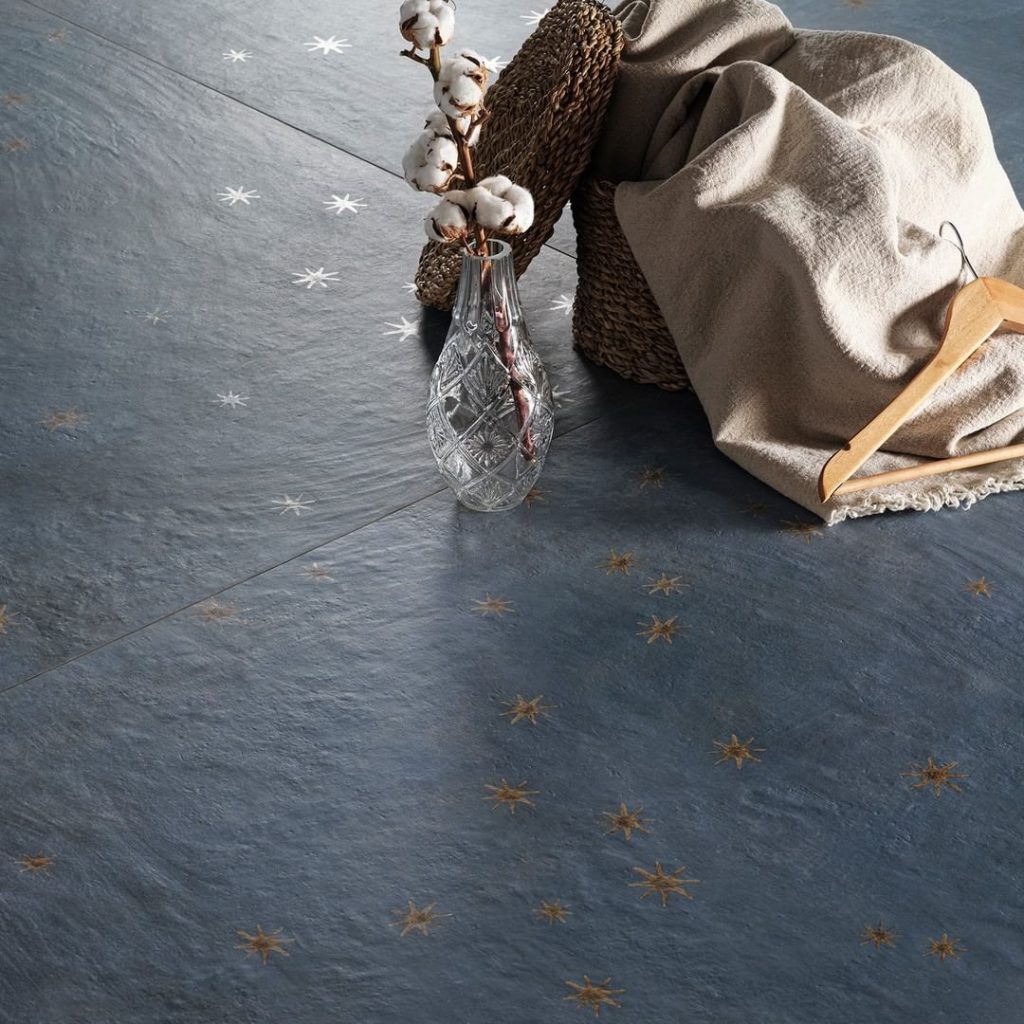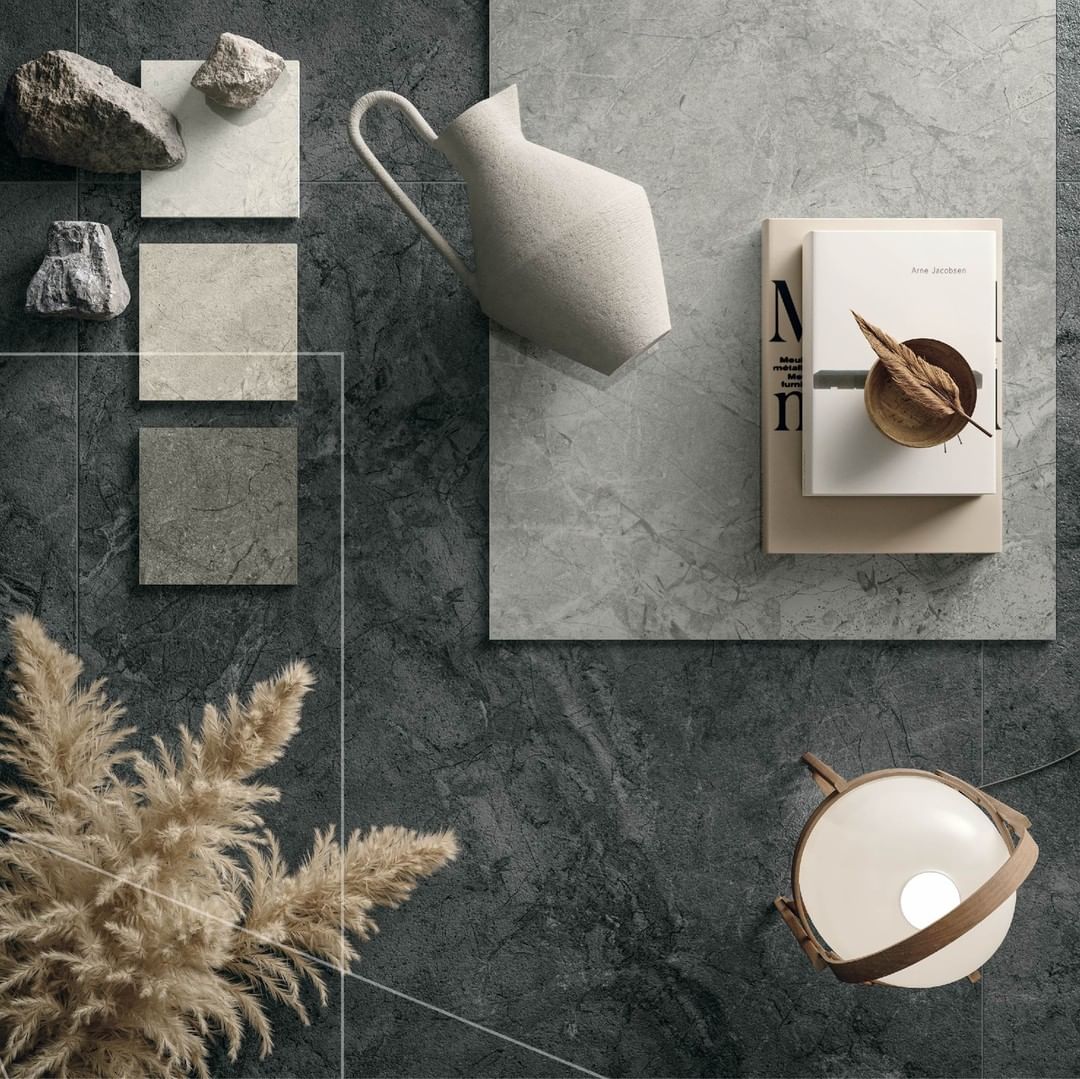Whatever they say, porcelain stoneware has carved out, and still continues to do so, a prominent place among the most popular materials in contemporary construction. However, having set foot more and more in other-like environments, whether this “other” wood, concrete or marble, is not only due to a question of style or passing trends. In addition to being versatile, pleasantly textured and available in different formats, stoneware is also hypoallergenic, odorless and long-lasting. It does not retain dirt and bacteria. It is easy to install, does not burn and resists frost. But that is not all. As it does not contain plastic, porcelain stoneware is among the few that are highly compatible with the environment. That’s why after Riva 1920 wood, we explore its potential below through the green commitment of a large company like Ceramiche Refin: sustainability beyond trend and quality, in fact, is no small feat
What is porcelain stoneware and how is it distinguished from common ceramics?
Porcelain stoneware is one of the many ceramic materials with their own characteristics and uses, such as terracotta, single-fired, double-fired and clinker. Technically, the UNI standards establish that stoneware is the ceramic with a water absorption coefficient of less than 0.5%. More simply, it is a compact and hard paste, colored and non-porous. The word “grès” actually indicates that the ceramic mass of the tile is extremely vitrified. That is, compact to the point of guaranteeing the exceptional resistance that distinguishes it. The result is a mixture of lean clay, not very refractory, baked in the oven (1200-1400 C °) until it reaches a state of non-porous vitrification which gives it impermeability. The highest degree of flexural strength also derives from this characteristic. That is to say the maximum tension that the material, when subjected to an increasing bending action, can tolerate before breaking.

As if that were not enough, another quality that should not be underestimated is its very high resistance to abrasion. That is the resistance that the surface opposes to the movement of bodies, surfaces or materials in contact with it. This is because, when subjected to high temperatures, precious clays and feldspar are transformed into stoneware tiles with characteristics of anti-freeze, resistance to shocks, scratches and extraordinary chemical attacks.
But why can it be considered a highly eco-sustainable and safe material?
Compared to other materials used in architecture, ceramic is in itself a sustainable and safe choice because it comes from a mix of natural raw materials whose extraction respects the environment. In fact, by its nature, it is inert and does not emit VOCs even in the event of exposure to direct sunlight. It does not contain toxic substances such as phthalates, formaldehyde, solvents, softeners or other chemical additives.
It is a 100% recyclable material and can be disposed of without risk to the environment. Moreover, thanks to the excellent thermal conductivity, it allows energy savings when applied with floor or wall heating systems. It is also clear that it is up to corporate ethos and credibility to certify that logistics, distribution and installation are equally sustainable. Also for this reason, therefore, we refer to Ceramiche Refin to explore the numerous potential of a building product with multiple qualities. Indeed, from production to product packaging, Ceramiche Refin ensures 100% recyclability and the highest standards of environmental respect. We therefore know together how the company has, over time, established itself in the international construction industry.

What is the strength of Ceramiche Refin rooted in?
Being part of the leading world ceramic group such as the Concorde Group, Ceramiche Refin has been offering a wide range of porcelain stoneware solutions since 1962. The tireless commitment to aesthetic research and technological innovation has allowed the company to achieve, in time not suspicious, levels of excellence both in the product and in the production processes. The production capacity of Ceramiche Refin exceeds 7 million square meters per year. And it is supported by state-of-the-art systems for the creation of graphics and post-processing activities. All stages of the production process are subjected to rigorous quality control procedures. The excellent quality standards of their products are, in fact, attested by the most prestigious international certifications.
Furthermore, Refin designs and manufactures entirely in Italy, through company management based precisely on respect for the environment. The secret to being able to translate the much ostentatious “Made in Italy” into a reason for success lies in not interpreting it as a mere question of style, but as a production model. This is how they combine the typically Italian historical and cultural expressiveness with the work ethic that distinguishes the manufacturing tradition of the Bel Paese. It is no coincidence, in this regard, that the Refin have signed the code of ethics on Made in Italy drawn up by the Governing Council of Confindustria Ceramica. With this, they are committed to transparently declare the origin of all their products.
But, specifically, how has Ceramiche Refin become a pioneer in ceramic sustainability?
It must be said immediately that, as mentioned, the commitment to safeguarding the environment, as a heritage of future generations, has always been one of the founding values of Ceramiche Refin’s mission. By aiming to reduce the environmental impact of their production cycle, they have in fact managed to achieve 100% recycling of production water, thus optimizing the use of water resources. Similarly, they also recycle 100% of waste materials, reusing them internally or having them recovered by third parties.
In addition, in the last decade, the company has embarked on a process of restructuring and optimizing the production phases by installing state-of-the-art systems. Among the plant modifications, the most significant relate to the photovoltaic system that generates electricity used for the needs of the offices and the recovery system of the heat generated by the ovens to reuse it in the production cycle. Furthermore, the cogeneration plant to generate electricity to cover the needs of the users and thermal energy necessary for the preparation phases of the atomized mixture allows an annual saving of methane gas comparable to the consumption of more than 1500 cars. These interventions, therefore, have not only made it possible to reduce the environmental impact. These have simultaneously increased production, managing to reduce emissions despite the continuous expansion of production.
And from a formal point of view, how is so much dedication, research and quality expressed?
It is the perfect imperfection of nature and art that constitutes the main source of inspiration for Refin Studio. This, together with the DesignTaleStudio creative laboratory, encourages the dedication to innovation of a team of ceramic professionals and important collaborations with the protagonists of the current “design scene”. For example, at the latest Cersaie, the International Exhibition of Ceramics for Architecture and Bathroom Furniture held in Bologna in September 2021, Refin paid tribute to the Italian historical and artistic tradition. Three collections were presented with the aim of dressing every architectural and interior design project with emotions. Among these, the spotlight was on Affrescati, Cortina and River.
The first offers an evocative and eclectic interpretation of the history and beauty of Italian wall frescoes. A rich artistic tradition that has been projected into the contemporary world through intensely material surfaces, characterized by slight undulations, brush marks and an original chromatic stratification. All bearers of a refined identity that creates sophisticated sets.
With Cortina, then, ancestral wisdom and craftsmanship are reinterpreted to emphasize the exclusivity of everyday luxury. This collection tells about different essences and various degrees of aging of the wood. The result is the result of an accurate and meticulous research process aimed at choosing the most particular staves to offer a completely exclusive product.
Last one, however, recalls the particular natural phenomenon linked to the erosive action of water, a natural element that has always shaped the stones of rivers. Where the stone emerges, the effect remains material and structured, while when immersed it is smoothed by water and softened in the contrasts, benefiting from a more delicate and elegant appearance.

What, ultimately, can only further convince us that ceramic is the right choice for every home need?
Ceramic is a safe choice, because, in itself, it is a safe, natural material suitable for any environment. It does not release harmful substances, it is sustainable, it does not burn, it is recyclable and resistant, it is easy to install and lasts a long time. The constant search for new opportunities that technology offers us to make industrial production increasingly compatible with the environment in which future generations will live is therefore an essential approach for companies increasingly projected to embrace the so-called “green philosophy”. Because it is everyone’s commitment to fight for the development of products with a low environmental impact, which can give impetus to ever more efficient and effective sustainable building projects!





